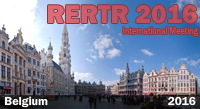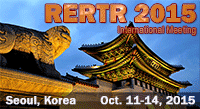Abstracts and Available Papers Presented at the
1995 International RERTR Meeting
PROCESSING OF LEU TARGETS FOR Mo-99 PRODUCTION--
DISSOLUTION OF METAL FOIL TARGETS BY ALKALINE HYDROGEN PEROXIDE*
D. Dong and G. F. Vandegrift
Argonne National Laboratory
Argonne, Illinois U.S.A.
S. Amini, J. B. Hersubeno, H. Nasution, and Y. Nampira
Indonesian National Atomic Energy Agency
Serpong, Indonesia
Presented at the1995 International Meeting on
Reduced Enrichment for Research and Test Reactors
September 18-21, 1995
Paris, France
*Work supported by the US Department of Energy
Office of Nonproliferation and National Security
under Contract No. W-31-109-38-ENG.
ABSTRACT
In FY 1995, we started studies on a new process for dissolution of low-enriched uranium (LEU) targets for Mo-99 production. In this process, an LEU metal foil target is dissolved in a mixture of sodium hydroxide and hydrogen peroxide, then Mo-99 is recovered from the dissolved solution. We focused on the dissolution kinetics to develop a mechanistic model for predicting the products and the rate of uranium dissolution under process conditions. We thoroughly studied the effects of hydrogen peroxide concentration, sodium hydroxide concentration, and temperature on the rate of uranium dissolution.
It was found that uranium dissolution can be classified into a low-base (<0.2 M) and a high-base (>0.2M) process. In the low-base process, both the equilibrium hydrogen peroxide and hydroxide concentrations affect the rate of uranium dissolution; in the high base process, uranium dissolution is a 0.25th order reaction with respect to the equilibrium hydrogen peroxide. The dissolution activation energy was experimentally determined to be 48.8 kJ/mol. Generally, the rate of uranium dissolution increases to a maximum as the hydroxide concentration is increased from 0.01 to about 1.5M, then it decreases as the hydroxide concentration is further increased. The alkalinity of the dissolution solution is an important factor that affects not only the dissolution rate, but also the amount of radioactive waste.
![]() PDF version available
PDF version available
DOWNLOAD full paper in PDF format.
Contact:
George
F. Vandegrift
Department Head,
Process Chemistry and Engineering
Argonne
National Laboratory
9700
South Cass Avenue
Argonne,
IL 60439 USA
Phone: (630) 252-4513
Fax: (630) 252-4513
![]()




